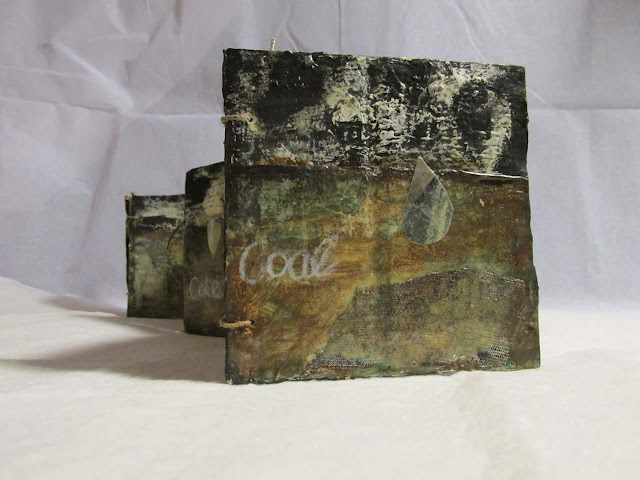When so much of making work as an artist involves slogging away in a room with no idea if it's ever going to be seen by the world outside, it's satisfying when a little success comes your way. I am very proud that two of my handmade books were acquired recently by the Joan Flasch Artist's Book Collection at the School of the Art Institute, Chicago. This collection is one of the most renowned collections of books made by artists in the United States, so it's a huge honour to be included.
Here is one of the pieces, an interleaved slit accordion fold of two etchings:
And here is the other, a heavily collaged accordion book bound together by sisal:
Each piece is now being catalogued and digitized, and at some point in the future they will be on display at the library, possibly in the company of books by artists such as Joseph Beuys:
And Christo:
And Richard Tuttle:
I have paintings in my studio that are six feet square, yet it's these two small books that have given me my best achievement in the last few years. There's probably a moral in that somewhere.
Here is one of the pieces, an interleaved slit accordion fold of two etchings:
And here is the other, a heavily collaged accordion book bound together by sisal:
Each piece is now being catalogued and digitized, and at some point in the future they will be on display at the library, possibly in the company of books by artists such as Joseph Beuys:
And Christo:
And Richard Tuttle:
I have paintings in my studio that are six feet square, yet it's these two small books that have given me my best achievement in the last few years. There's probably a moral in that somewhere.




